Earning a ticket back to the lab
Science is all about data: the more data, the better! So, we gather a variety of information about every squirrel that we capture and carefully record the information on each animal’s data sheet.
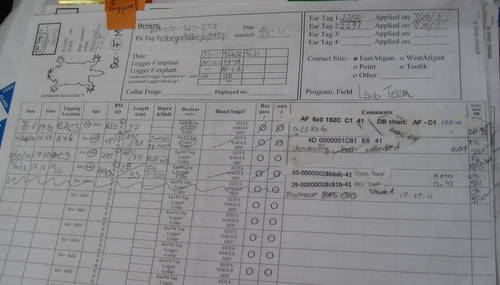
Some of the data can be gathered at the site where we trapped the squirrel, like weight, ear tag numbers, and ear tag wire color. Gender can also be determined, but it is challenging to tell if the females are pregnant or not while they are wiggling inside the handling bag.
Some procedures need to be done while the squirrel is under anesthesia (meaning that the squirrel is temporarily put into a deep sleep). Until last week, this meant that the squirrel earned a ticket to the lab. However, with the arrival of a needed part, we were able to bring the needed supplies to the field to anesthetize a squirrel at the truck instead of taking it back to the lab. More on that later. For now, let’s assume that a squirrel has earned a ticket back to the lab.
First, we label the squirrel’s cage with the burrow number where we found it so that we can return it to the same location later (find out more about trapping here or watch a video here). Next, we place the squirrel in a black bag for the walk back to the truck. The bag seems to help ease their stress.

They ride in the bed of the truck (in the black bag) to the lab where we remove them from the bags and place them on newspaper and woodchip lined shelves in a darkened room (again, the dark seems to help them feel less stressed during their visit).
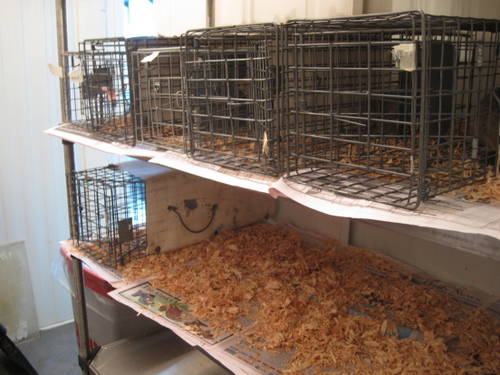
Processing an Arctic ground squirrel: A step by step guide
Each squirrel is processed individually. Here’s what the process often looks like, with one person recording data and one person working with the squirrel:
- Squirrel (in cage) placed on special table with a grated cover over a metal tub. We wait a couple of minutes for the squirrel for go to the bathroom and the waste falls through the grate into the metal tub below.
- We place an anesthesia chamber (it is a repurposed pickle jar) in the opening of the cage and coax the squirrel into the jar (gently blowing on the squirrel often does the trick).
- Once the squirrel is in the jar, we add the lid, which is attached to Isoflurane (anesthesia) and Oxygen, cover the jar with a towel (again, trying to keep the squirrel’s stress to a minimum), and wait a couple of minutes until the anesthesia has kicked in.
- Next, we remove the squirrel from the jar and can safely handle it. We read the ear tag numbers so that their data sheet can be located in the binders and the data collection begins!
We weigh the squirrel on an electronic scale, which is more accurate than the spring scales that we use in the field.

Anesthetized Arctic ground squirrel being weighed on an electronic scale Measuring overall length and the zygomatic arch (basically the distance between cheek bones) comes next.
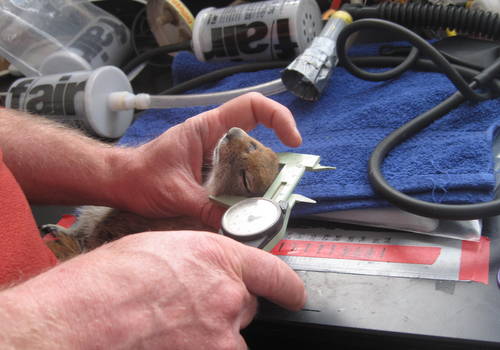
- Arctic ground squirrels change from a silver color to a reddish color as the summer season continues, so we also assess the status of the squirrel’s molt. There is a written scale to help us judge this, but it can be a bit subjective.
- We assess reproductive status. Are the females pregnant? Nursing young? Are the males ready to reproduce?
- At this point, we can add ear tags, change ear tag wires, attach light collars, download data from light collars, add radio transmitter collars, add a PIT (Passive Integrated Transponder) tag (another name for the tiny microchips that people often have placed in their pets for easy identification should their pet ever become lost), etc.
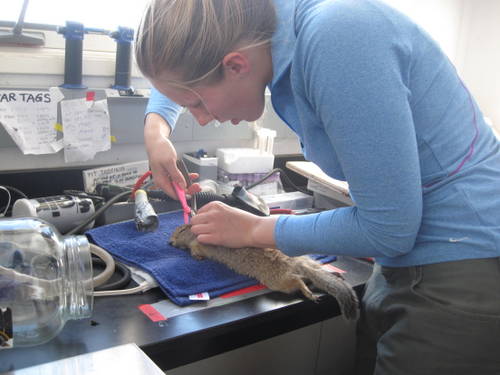
- We use a tiny squirrel face mask to continue delivering a small dose of anesthesia while we process the squirrel.
- When we are done working with the squirrel, we remove the face mask, and the squirrel rests on the heating pad (or sometimes I hold it) until it begins to wake up.
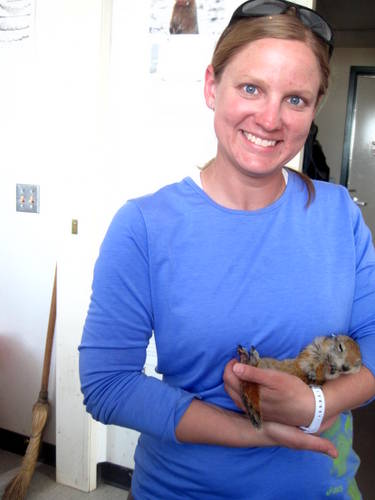
- After the squirrel begins to rouse, we place it back into its cage with carrots and rodent chow, which it devours the instant it emerges fully from anesthesia.
- Within a few minutes, the squirrel is back to normal and can be returned to its home the same day or the next day. (Nursing females or pregnant females are always returned the same day)
Wrapping it up
With the portable anesthesia machine, we can now do much of this work from the back of the truck and typically only bring back animals that need to have a previously implanted temperature logger removed. That is a much more involved surgical procedure that requires special certification. I have only seen it once so far.
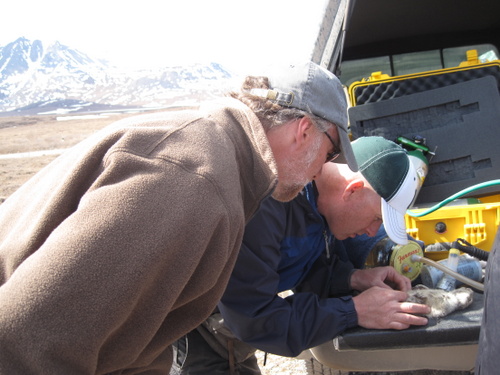
All the data is eventually entered into a computerized database so that the scientists can access all the available information about each squirrel quickly and easily. Like I said, science is all about the data!


Comments